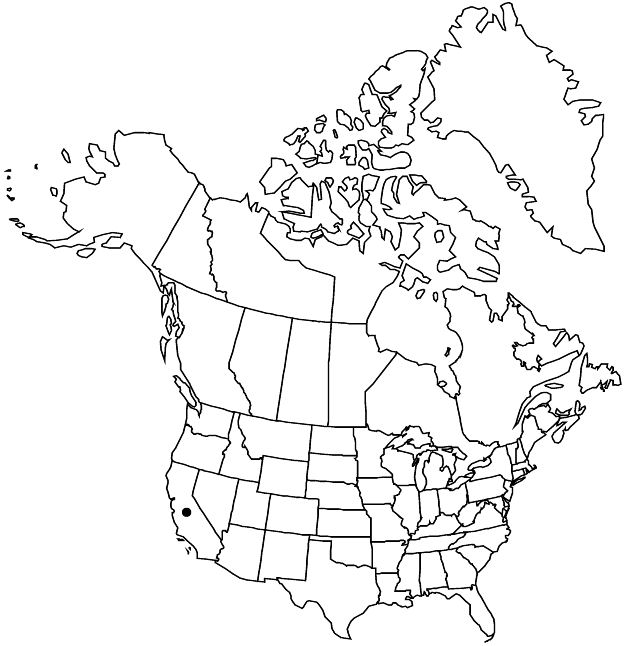Difference between revisions of "Drymocallis cuneifolia"
Monogr. N. Amer. Potentilleae, 204, plate 111 [as cuneata]. 1898.
FNA>Volume Importer |
FNA>Volume Importer |
(No difference)
| |
Revision as of 23:11, 16 December 2019
Caudex branches elongate. Stems openly tufted to loosely spaced, 0.5–4.5 dm; base 1–2 mm diam., sparsely septate-glandular. Leaves sparsely to moderately hairy; basal 2–15 cm, leaflet pairs (2–)3–5; terminal leaflet broadly cuneate to nearly round, 0.6–2(–3.5) × 0.5–2 cm, teeth irregularly single, 2–4 per side, apex rounded to truncate; cauline 0–1(–2), reduced, leaflet pairs 1–2. Inflorescences 3–10(–15)-flowered, not leafy, open, 1/4–3/4 of stem, wide, branch angles 20–75°. Pedicels 2–15 (proximal to 30) mm, sparsely to moderately short-hairy, septate-glandular. Flowers opening narrowly; epicalyx bractlets linear to narrowly elliptic or lanceolate, 1–2 × 0.5 mm; sepals erect, 2–5 mm, apex broadly obtuse; petals scarcely overlapping, erect, yellow, narrowly obovate, 2–4 × 1.5–2.5 mm, ± equal to or slightly longer than sepals; filaments 1.5–2.5 mm, anthers 0.5–0.8 mm; styles slender, 1.5–2.5 mm. Achenes brown, 0.8–1.2 mm.
Discussion
Varieties 2 (2 in the flora).
Drymocallis cuneifolia has a complex nomenclatural history, complicated by the extreme rarity of the typical variety. Rydberg described the species on the basis of a single collection from the San Bernardino Mountains of San Bernardino County, probably near Green Lead Mines. When comparable (though significantly smaller) plants were found in the San Gabriel Mountains of Los Angeles County, P. A. Munz and I. M. Johnston (1925) adopted Potentilla cuneifolia (Rydberg) Th. Wolf for both extremes; this name was later replaced with P. peirsonii because of the earlier P. cuneifolia Bertoloni. In the absence of comparable new collections from the San Bernardino Mountains, D. D. Keck (in J. Clausen et al. 1940) concluded that the type of D. cuneifolia was merely an immature specimen of D. lactea var. lactea and accordingly described P. glandulosa subsp. ewanii to accommodate populations in the San Gabriel Mountains.
The 2004 discovery of a small population of plants comparable to the type of Drymocallis cuneifolia from near the type locality (Elvin 3555, IRVC, UCR) confirms that D. cuneifolia is a valid taxon that shares most of the diagnostic features of populations in the San Gabriel Mountains. Plants in the San Bernardino Mountains tend to be larger than those in the San Gabriel Mountains, with fewer and somewhat differently shaped leaflets; they are accordingly treated here as varieties.
Selected References
None.
Key
| 1 | Stems 2–4.5 dm; basal leaves 5–15 cm; San Bernardino Mountains. | Drymocallis cuneifolia var. cuneifolia |
| 1 | Stems 0.5–2(–2.5) dm; basal leaves 2–10 cm; San Gabriel Mountains. | Drymocallis cuneifolia var. ewanii |
